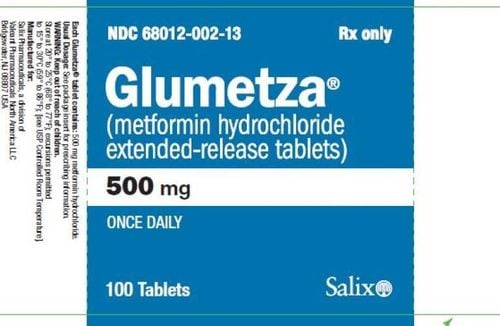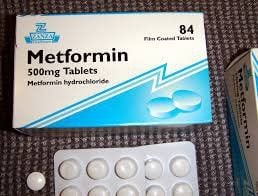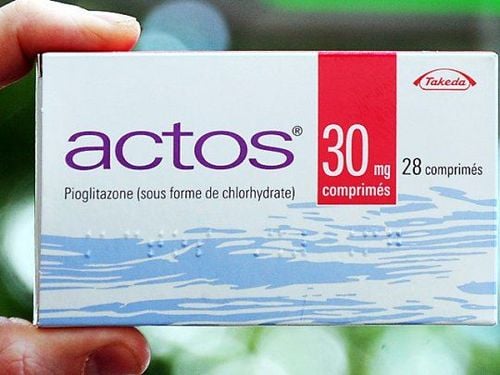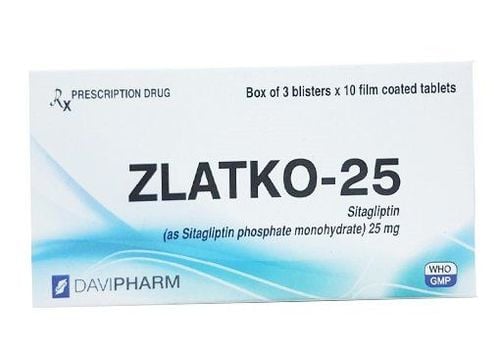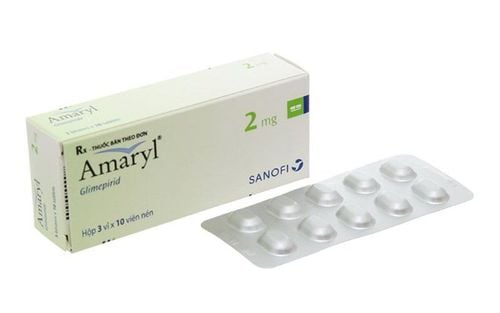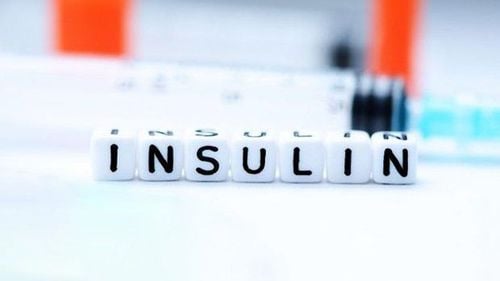This is an automatically translated article.
Navadiab drug is commonly used in the treatment of non-insulin dependent type 2 diabetes. Learning about the indications, uses and doses of Navadiab can help bring about good treatment results, which is especially important in newly diagnosed cases.
1. What is Navadiab?
Navadiab medicine is produced in the form of film-coated tablets, 80mg content, including:
Gliclazide 80 mg. Excipients: Lactose, gelatinized cornstarch, microcrystalline cellulose, talc, magnesium stearate, hydrated colloidal silica. Just enough for one pill. Gliclazide is a sulfonylurea with a nitrogen ring molecule, so it has different characteristics from other sulfonylureas.
The main mechanism of Gliclazide hypoglycemia is the stimulation of pancreatic beta cells to secrete insulin through increasing the response of the pancreas to glucose. This mechanism helps to reduce postprandial hyperglycemia. In addition, Gliclazide also has a partial inhibitory effect on platelet aggregation, thereby normalizing the breakdown of fibrin in the strong wall and endothelium.
2. Uses of the drug Navadiab 80mg:
Navadiab medicine 80mg is indicated for the treatment of the following cases:
People diagnosed with non-insulin dependent type 2 diabetes. People with diabetes without ketoacidosis in adults or the elderly. People with diabetes who have failed treatment with diet methods to balance blood sugar. People with diabetes have vascular complications.
3. Contraindications to using Navadiab 80mg
Type 1 diabetes . People with diabetes in the pre-coma or coma stage. Severe diabetic ketoacidosis in children or adults. Severe liver and kidney dysfunction. People with severe infections due to trauma, or after major surgery. Hypersensitivity to the components and excipients of the drug. History of allergy to sulfonylureas.
4. How to use and dose Navadiab 80mg
Usual dose:
Navadiab dose 80mg: take 1 tablet (80mg) / time, 2 times a day. Additional dose:
Navadiab dose 80mg: take 1 tablet (80mg)/time, 3 times a day. Do not take more than 4 tablets/day. Patients need to adhere to a strict diet when using the drug. Take the drug by mouth at the time immediately after a meal, the most suitable is breakfast. Drink with warm water, do not chew or break pills. If you forget to take your medicine, do not take it the next day. In order to avoid the side effects of the drug, it is necessary to carefully read the treatment instructions on the drug packaging and change the dose and usage method without the consent of the doctor.
5. Notes when using Navadiab
Side effects encountered:
In people with diabetes, using an overdose of the drug during the day may experience unwanted effects such as:
The most common are digestive problems such as nausea, vomiting , diarrhea or constipation. There may also be headache, dizziness, sensitivity to light and skin allergy symptoms such as urticaria, erythema. In susceptible individuals, hepatocellular microtubule jaundice often appears. Hypoglycaemia, leukopenia or leukopenia, anemia, and thrombocytopenia are rare. These side effects may disappear or be reversible after discontinuation of the drug. In case of experiencing the above symptoms after taking the drug, you should notify your doctor or immediately go to the nearest medical facility for timely treatment.
Be careful when using the drug in the following subjects:
Be careful when using Navadiab in the following cases: Elderly people, people with malnutrition. People with impaired liver function, severe kidney function. It is necessary to discontinue the drug and change to insulin replacement for those with diabetes in the decompensated stage or preparing for surgery. Regularly check blood glucose and urine glucose after meals during the day. Pregnancy and breast-feeding: There are currently no clear studies evaluating adverse effects in patients using Navadiab during pregnancy or lactation. However, there are still some cases of the drug causing hypoglycemia in pregnant women. Therefore, caution should be exercised when using therapeutic drugs in these cases. Currently, there are no regulations on contraindications to the use of drugs in people who drive or operate machinery. However, the side effect of low blood sugar can cause decreased concentration during work.
6. Navadiab drug interactions
Drug interactions with other drugs:
Anti-inflammatory drugs such as NSAIDs, Salicylate, Sulfamide, Diazepam, Beta-blockers, some antibiotics such as Chloramphenicol, Tetracycline, oral drugs of Miconazole, MAOIs can rapidly increase the risk of hypoglycemia in patients receiving Navadiab therapy.
When used with Barbiturates, it reduces or prevents the effect of Navadiab.
Alcohol use while being treated with Navadiab may increase the possibility of hypoglycemia.
In short, before taking Navadiab, patients need to carefully read the instructions for use on the package to understand the basic information on how to use and important notes. In addition, following the instructions of the treating doctor will help bring the best treatment effect.
Please dial HOTLINE for more information or register for an appointment HERE. Download MyVinmec app to make appointments faster and to manage your bookings easily.




